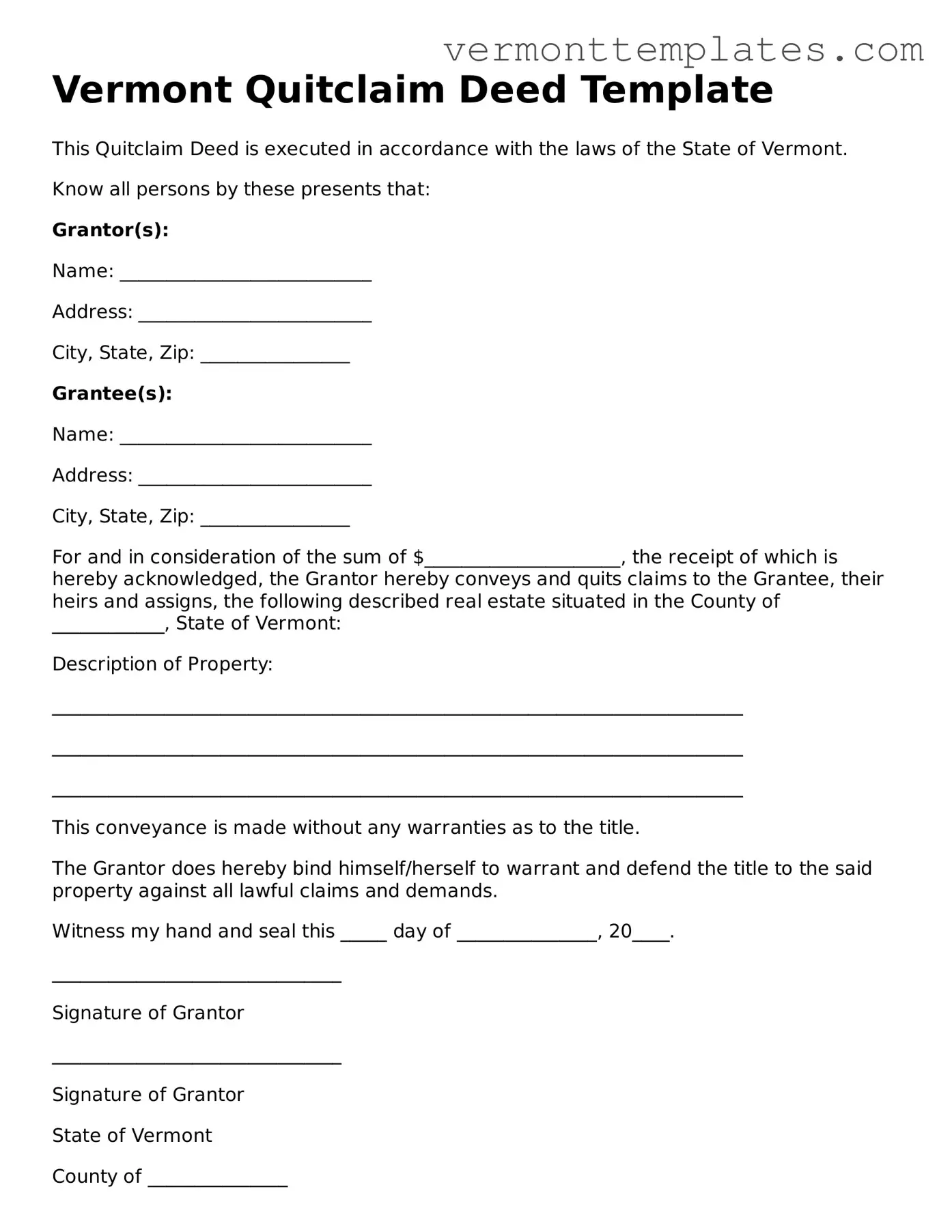Vermont Quitclaim Deed Template
This Quitclaim Deed is executed in accordance with the laws of the State of Vermont.
Know all persons by these presents that:
Grantor(s):
Name: ___________________________
Address: _________________________
City, State, Zip: ________________
Grantee(s):
Name: ___________________________
Address: _________________________
City, State, Zip: ________________
For and in consideration of the sum of $_____________________, the receipt of which is hereby acknowledged, the Grantor hereby conveys and quits claims to the Grantee, their heirs and assigns, the following described real estate situated in the County of ____________, State of Vermont:
Description of Property:
__________________________________________________________________________
__________________________________________________________________________
__________________________________________________________________________
This conveyance is made without any warranties as to the title.
The Grantor does hereby bind himself/herself to warrant and defend the title to the said property against all lawful claims and demands.
Witness my hand and seal this _____ day of _______________, 20____.
_______________________________
Signature of Grantor
_______________________________
Signature of Grantor
State of Vermont
County of _______________
On this _____ day of _______________, 20____, before me, a Notary Public, personally appeared _________________________ and _________________________, known to me to be the person(s) whose name(s) is/are subscribed to the within instrument, and acknowledged that they executed the same.
In witness whereof, I have hereunto set my hand and official seal.
_______________________________
Notary Public
My commission expires: _______________
